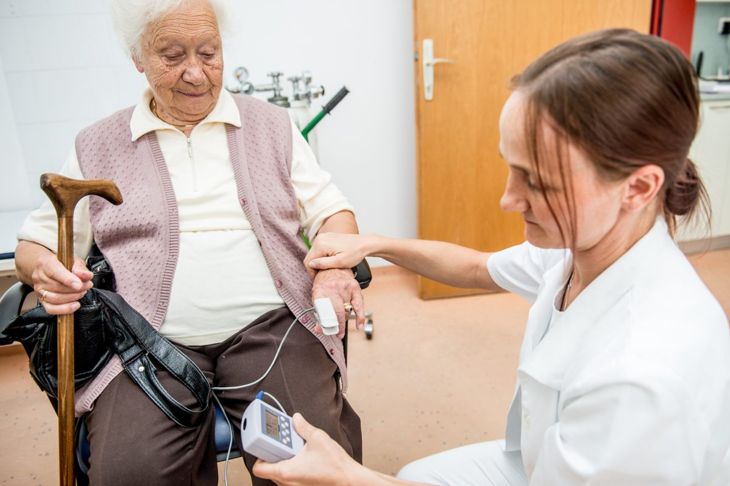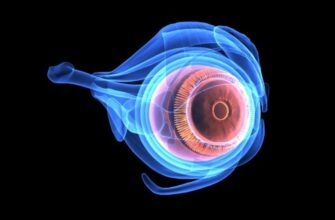Blood returns to the heart from the body through the right atrium. From there, it goes into the right ventricle, through the pulmonary artery, and into the lungs for re oxygenation. Cor pulmonale is right-sided heart failure. The right ventricle has to work harder to pump blood into the lungs. It enlarges, which ultimately adds more strain to the heart. Eventually, the right ventricle fails.
Pulmonary Hypertension
Normally, blood that flows from the heart to the lungs through the pulmonary artery does not cause a lot of pressure because the blood does not have far to travel. Pulmonary hypertension is when the pressure in the lung’s arteries gets too high. This causes changes in the small blood vessels, which makes it harder for the heart to pump blood to the lungs. The heart strains, and cor pulmonale may result.
Other Causes of Cor Pulmonale
While pulmonary hypertension is the most common cause of cor pulmonale, it is not the only one. Any condition that lowers the oxygen level of the blood over a long period can cause the condition, including autoimmune diseases affecting the lungs, COPD, cystic fibrosis, lung scarring, obstructive sleep apnea, blood clots in the lungs, and severe curvature of the spine that affects breathing.
Early Symptoms
Cor pulmonale is asymptomatic at first, though the person may experience symptoms of an underlying respiratory disorder. As the problem progresses, it begins to affect the right side of the heart. Shortness of breath on exertion is often the first symptom of cor pulmonale. A rapid, bounding heartbeat may also occur.
Advanced Symptoms
As cor pulmonale worsens, so do the symptoms. They may occur with minimal exertion and even at rest and include chest pain or discomfort, fainting during activity, shortness of breath, swelling in the extremities, wheezing, coughing, and increased sputum production. Cor pulmonale may also progress to cyanosis — bluish lips and fingers due to poor oxygenation.
Diagnosis
A diagnosis of cor pulmonale usually begins with a physical exam. The doctor may find excess fluid in the abdomen or ankles, abnormal heart sounds, swollen liver, swelling in the large veins in the neck, or bluish skin. Diagnostic tests include CT scans, echocardiograms, right-sided heart catheterization, chest x-rays, and ventilation and perfusion scans of the lungs. Lab tests include blood antibody tests, arterial blood gases, and tests for autoimmune diseases.
Treatment
The treatment goal for cor pulmonale is to control symptoms. The cause usually determines treatment, which may involve medications to manage the risk of blood clots or symptoms of heart failure, supplemental oxygen, or a heart-lung transplant if medication is ineffective. Treatment should also address any underlying problems, like pulmonary hypertension.
Response to Treatment
The response to treatment varies depending on the severity of the disease. For some patients, cor pulmonale is not the dominant medical issue, and the underlying respiratory disorder is the primary target of treatment. Some patients develop serious cor pulmonale in response to this underlying condition, and it becomes a larger part of the overall clinical picture.
Daily Management
Daily management is essential to maintain adequate heart and lung function with cor pulmonale and any underlying conditions. People with right-sided heart failure should avoid strenuous activity and use supplemental oxygen as prescribed. Staying up-to-date on vaccinations can help prevent illnesses that put even more stress on the heart. People with cor pulmonale should stop smoking, and may need to limit salt and fluid intake. Young women with cor pulmonale should not get pregnant as it puts significant stress on the heart.
Prognosis and Complications
Prognosis largely depends on the cause of cor pulmonale. As the condition progresses, it becomes more and more important to make lifestyle changes that support the heart and lungs. Most people need to alter their daily routines, possibly bringing in help for cleaning and other household chores. If not managed properly, cor pulmonale can lead to life-threatening breathing problems, severe fluid buildup, shock, and even death.
Prevention
The biggest thing that people can do to prevent cor pulmonale is stop smoking. It is even better not to start in the first place. Smoking causes various lung diseases, each of which affects oxygenation and can eventually lead to cor pulmonale. Other preventive measures include managing underlying causes effectively and seeing a doctor regularly for checkups and lab work to make sure health concerns are not progressing.

 Home
Home Health
Health Diet & Nutrition
Diet & Nutrition Living Well
Living Well More
More




















